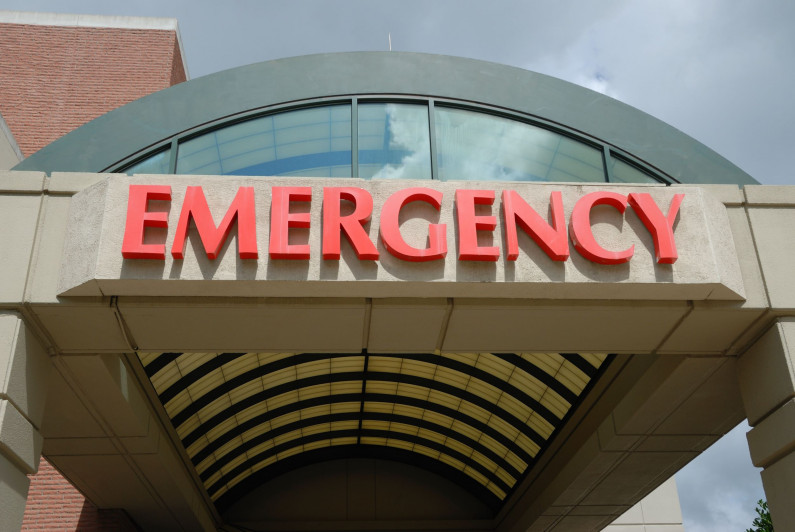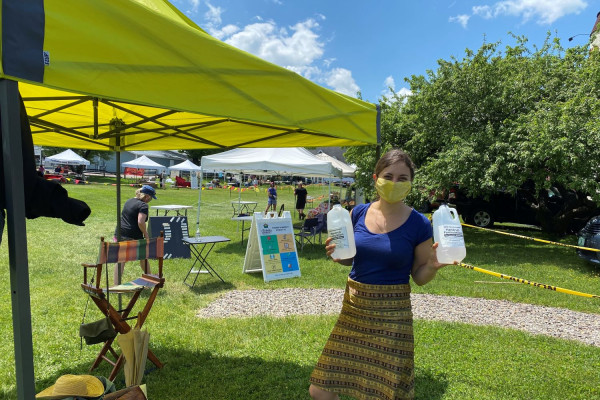An update on the impact of the VT COVID-19 Response Fund from May 2021.
Read more about "VT COVID-19 Response Fund: May 2021 Progress Report"Share Our Post:
The VT COVID-19 Response Fund Recovery Initiatives: A Q+A on Mental Health and Suicide Prevention

The Community Foundation established its VT COVID-19 Response Fund in March 2020 to encourage collective, coordinated grantmaking efforts that can quickly adapt to changing circumstances. Since it was created, the fund has distributed more than $10 million in grants to assist with basic and urgent needs for Vermont’s most vulnerable and jumpstart longer term recovery and resilience through recovery initiatives that address key challenges magnified by the pandemic: Rural Entrepreneurship, Food System Resilience, Rural Connectivity, Learning in Transition, Welcoming, Equitable, Anti-Racist Communities, and now—Mental Health and Suicide Prevention. Through focused grantmaking, our goal is to set the state on a pathway to more equity and greater resilience in the face of future disruption.
Mental Health and Suicide Prevention
 COVID-19’s impact on Vermont’s mental and behavioral health support system has been a double-edged sword. As more Vermonters experience social isolation due to disruption in their normal activities, more are also experiencing severe mental health crises and suicide ideation. At the same time, Vermont’s health system is not robust enough around mental health to handle this new influx, creating a real-back up of patients—particularly young people—in emergency departments waiting to be seen.
COVID-19’s impact on Vermont’s mental and behavioral health support system has been a double-edged sword. As more Vermonters experience social isolation due to disruption in their normal activities, more are also experiencing severe mental health crises and suicide ideation. At the same time, Vermont’s health system is not robust enough around mental health to handle this new influx, creating a real-back up of patients—particularly young people—in emergency departments waiting to be seen.
 “The situations in Vermont’s communities, health care facilities, and designated mental health support systems are dire,” said Vice President for Grants & Community Investments Sarah Waring in a recent press release. In response, the Foundation is seeking to increase the capacity of the medical field and nonprofit organizations that work with populations put most at risk to address increased need for mental health services and suicide prevention, intervention, and postvention care. To get a deeper understanding of the Mental Health and Suicide Prevention recovery initiative, we chatted with Sarah Waring and her colleague Kevin Wiberg, philanthropic advisor for community engagement on the Grants and Community Investments team.
“The situations in Vermont’s communities, health care facilities, and designated mental health support systems are dire,” said Vice President for Grants & Community Investments Sarah Waring in a recent press release. In response, the Foundation is seeking to increase the capacity of the medical field and nonprofit organizations that work with populations put most at risk to address increased need for mental health services and suicide prevention, intervention, and postvention care. To get a deeper understanding of the Mental Health and Suicide Prevention recovery initiative, we chatted with Sarah Waring and her colleague Kevin Wiberg, philanthropic advisor for community engagement on the Grants and Community Investments team.
Why has the Community Foundation decided to focus on Mental Health and Suicide Prevention as part of its pandemic recovery strategy?
Throughout the course of our COVID-19 response and recovery work, we continued to hear that certain populations of Vermonters are now more susceptible than ever to suicide ideation due to many factors—social isolation being a big one, as well as inability to access normal services, and cancellations of in-person gatherings. Let’s be clear: when folks are at the point of suicide ideation, the system has failed them. The support that should have been there and could have been there for them, from family to support systems, has not been identified and they clearly do not have what they need. So, we set out to answer a couple of questions:
1. Why are we in this moment of crisis?
2. How do we make sure fewer folks reach a point of suicide ideation?
Capacity constraints driven by a limited supply of trained, qualified mental health professionals has put a strain on our existing mental and behavioral health care service providers. There are simply not enough providers for the quantity of Vermonters seeking treatment.
In addition, the COVID-19 pandemic dismantled the standard systems of reporting symptoms of neglect, abuse, self-harm, or other outward signs of mental trauma. Most often, teachers report abuse situations, and when school went online, reports stopped, child abuse didn’t. Now as children and young adults are back in school, educators are realizing there is a bubble that happened within the last twenty months that the system was not ready to handle, as it was barely managing before—despite the tireless efforts of the service providers who are working as hard as they can under difficult circumstancesؙ.
Our recovery initiative is designed to address both the current crisis, as well improve the capacity of organizations to respond to crisis in the future.
What does a grantmaking strategy in support of Mental Health and Suicide Prevention look like in action?
Right off the bat, our strategy begins with deep partnership building and deep listening to those partners who are the experts. The Community Foundation is not a mental health organization, so we look to community partners to provide intelligence and help us understand the landscape before the pandemic, and what’s changed as a result. From there, we work with our partners to identify the pinch points in the mental health system that are driving the crisis, and how philanthropy can be used as a lever to help address those roadblocks. As of now, this has taken on four strategies:
1. Focus on emergency rooms: What do they need to improve the experience for patients experiencing mental health crisis? Some are thinking about upstream training and increasing capacity, while others are focused on how to meet patients where they are. For example, the Community Foundation is working with emergency departments around the state to provide therapeutic care kits for young patients who are experiencing mental health crises and are waiting for care.
2. Identify and support cornerstone suicide prevention organization: We realized early on that the mental health and suicide prevention initiative would really need a statewide “backbone organization” that can help coordinate services across the state and provide system support. As of now, we will be working with Vermont Suicide Prevention Center to build and strengthen its capacity to serve as a statewide go-to organization for suicide prevention, intervention, and postvention training and resources.
3. Prepare communities to support vulnerable neighbors: We want to identify those areas outside of the medical or service support system where people show up to improve their mental health. Whether that be local community centers, shelters, workshops and classes, or afterschool programs, we want to be sure staff is prepared to provide the necessary support to those who are vulnerable and struggling in a setting that is stigma-free. An example of this includes our partnership with the Department of Mental Health and Cathedral Square on the Sheds project, which will create gathering spaces for individuals to come work with their hands and build a sense of community while working on a shared project.
4. Crisis Hotline: As Vermont joins the national 988 suicide prevention hotline network, how well staffed are current hotlines managed by an individual organization? What are the educational credentials of folks answering crisis calls and what are the opportunities to provide them with additional training and support as they refer Vermonters to critical service networks?
What does success around Mental Health and Suicide Prevention look like? How will it make Vermont better for all Vermonters?
Every Vermonter’s life has meaning and purpose, and those individuals might not know it in the moment of crisis, so it is incumbent upon us to ensure people know they are valued before they get to that moment of crisis. No family, no parent, no partner deserves to go through the loss of someone because we as a community didn’t have the appropriate help available that they needed.
Vermont has had one of the fastest growing rates of suicide in the nation, if not the fastest growing rate, so success to us is seeing a reduction of that rate in Vermont. Success is being able to document that more Vermonters have more immediate access to programs and services that they need when they need them. Success is seeing organizations that work with vulnerable populations have increased capacity to provide effective services.
No Vermonter deserves to lose somebody they care about because Vermont’s networks of resources and services failed that person. That’s a future we can all rally around.
What hurdles currently stand in the way of success around this initiative, and how will they be addressed?
There are no doubt barriers to this work, which include:
- How do we find vulnerable people? When you’re experiencing a crisis—already feeling alone—reaching out to support services is difficult. You don’t know who you don’t know is in crisis.
- How do we find more qualified providers? We uncovered that the system is not robust enough for the crisis we are facing. More training, and simply, more qualified mental health professionals are needed.
- How do we care for the service providers experiencing trauma themselves? There is secondary trauma that comes with caring for people in crisis. Folks who are on frontlines in emergency rooms, dealing with a lot of mental and behavioral health issues and suicide ideation, are themselves now having a really hard time. If we can diminish the trauma experienced by patients, we can reduce the trauma experienced by hard tasked and overworked health care professionals.
We are currently supporting strategies that touch on many of these barriers, including a comprehensive mental health crisis line network, additional training for mental health providers, and supports for emergency room patients and their family.
How can the Community Foundation’s partners help support its work around Mental Health and Suicide Prevention?
Start by looking locally—who are the organizations in your area who work with vulnerable populations like victims of domestic violence, substance abuse recovery, or afterschool programs for youth? All of these organizations play vital roles in the mental health needs for Vermonters, and they all need your support.
Also, think about contributing to the VT COVID-19 Response Fund, noting that your donation is designated to support the Mental Health and Suicide Prevention recovery initiative. There are so many ways that philanthropy can reach people in a way that intervenes before the crisis becomes real, and we have staff working diligently to figure out the best way to get resources to where they’re needed most. There is much work to be done and together we can build and support a comprehensive approach to helping Vermonters access mental health and suicide prevention, intervention, and postvention services.
Finally, keep an eye out for an upcoming brief from the Insight Hub at the Vermont Community Foundation that will share some actions philanthropists can take right now to support Vermonters experiencing mental health crises.
To learn more about grantees, check out the press releases for the first grant round and second grant round.
Don't forget to check out our other VT COVID-19 Response Fund Q+A's:


